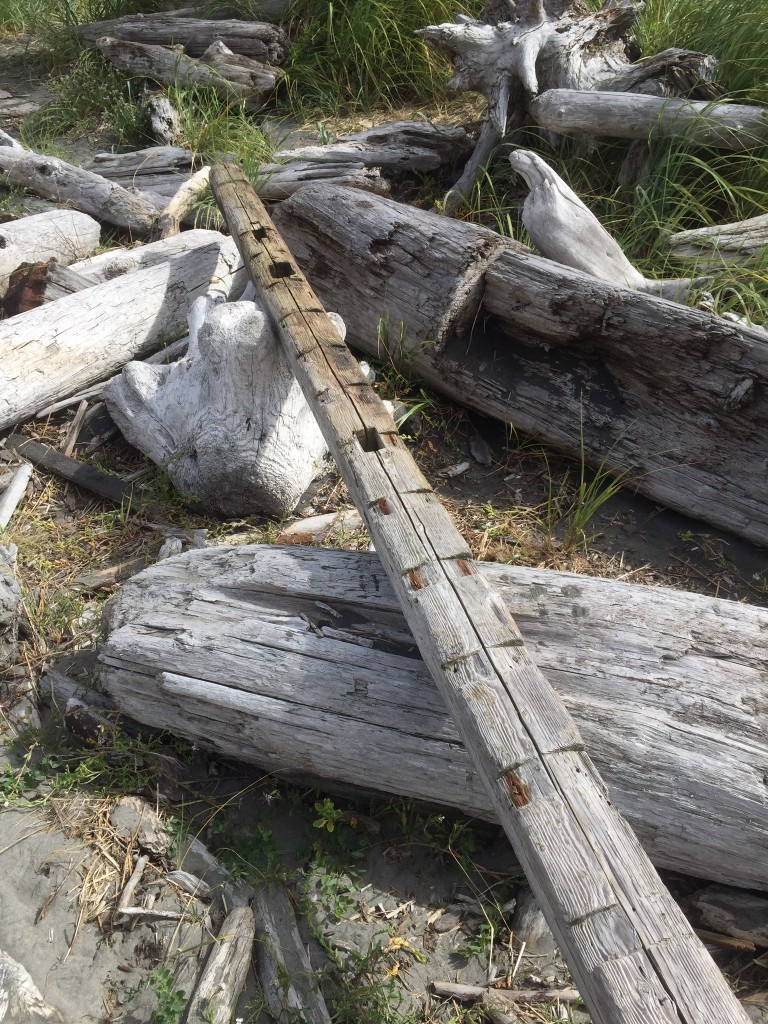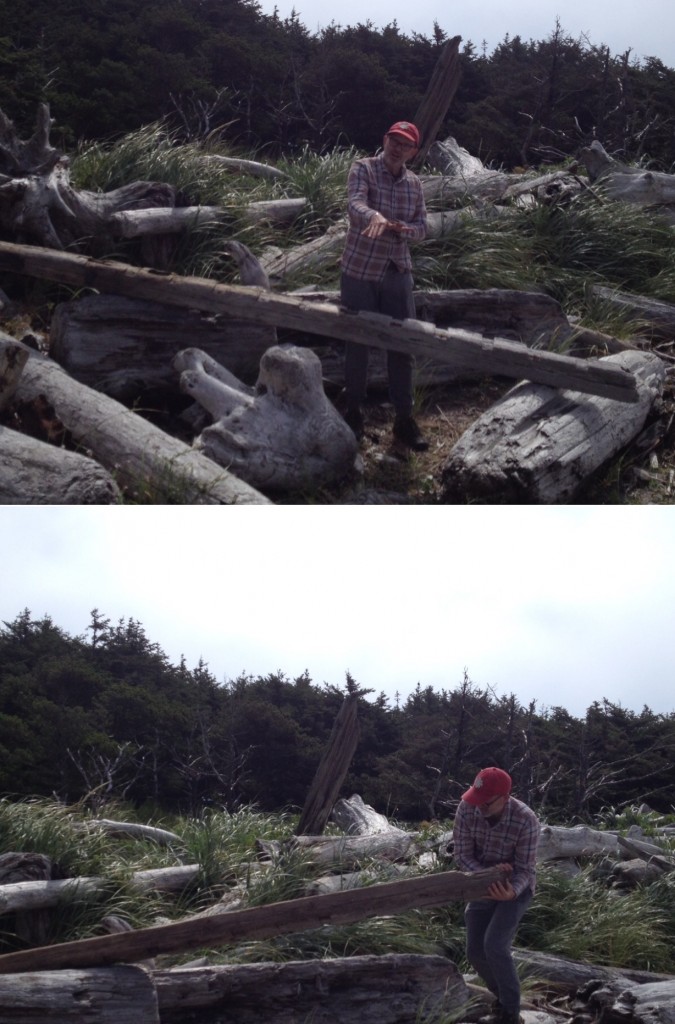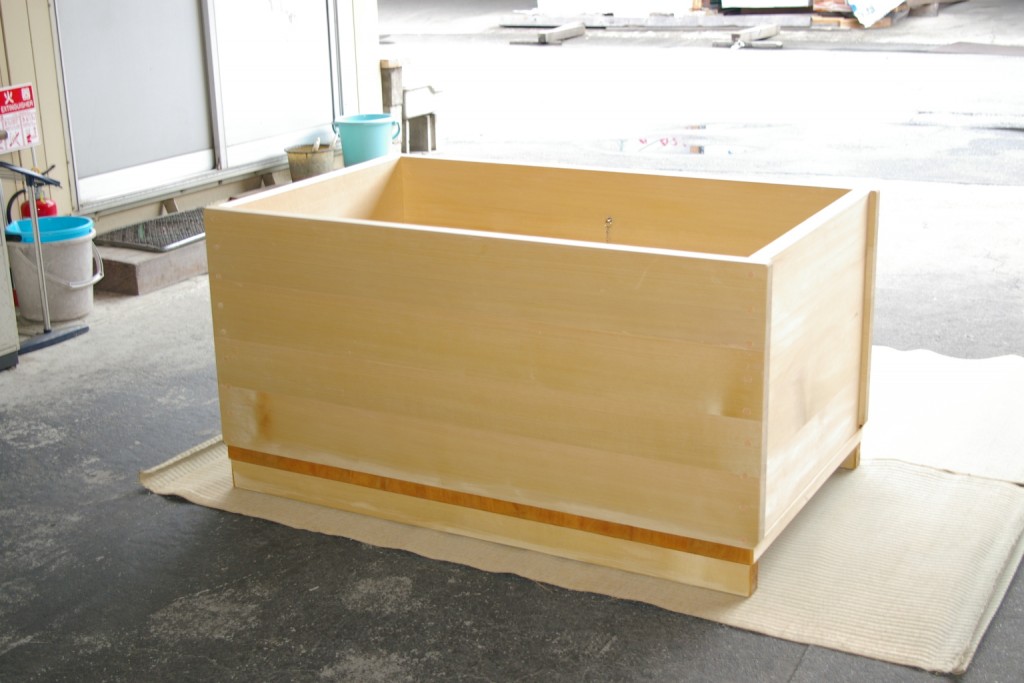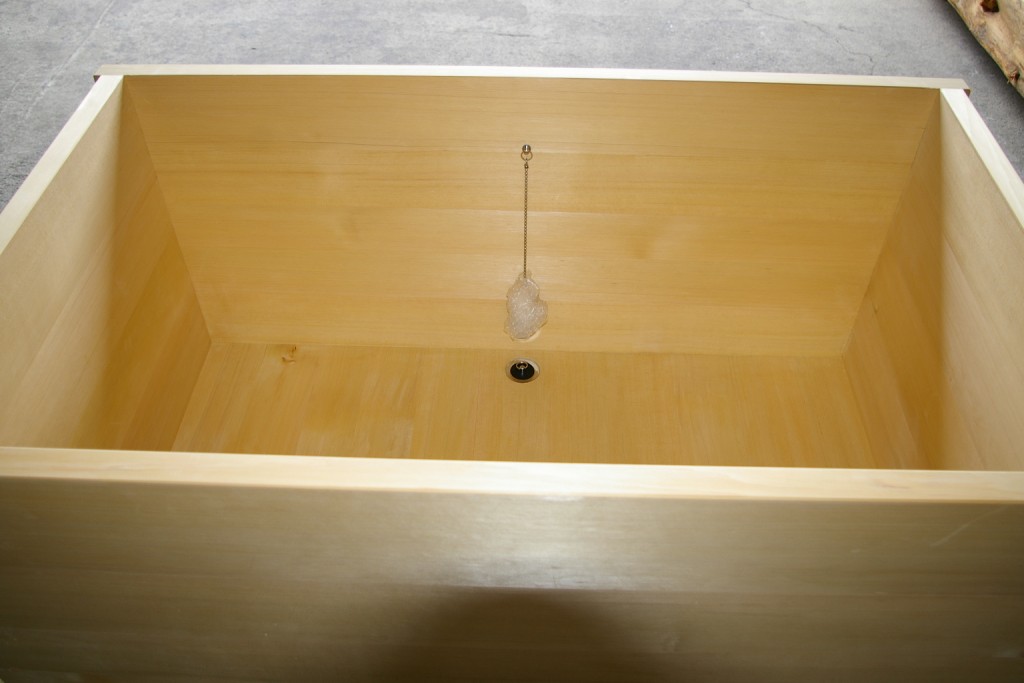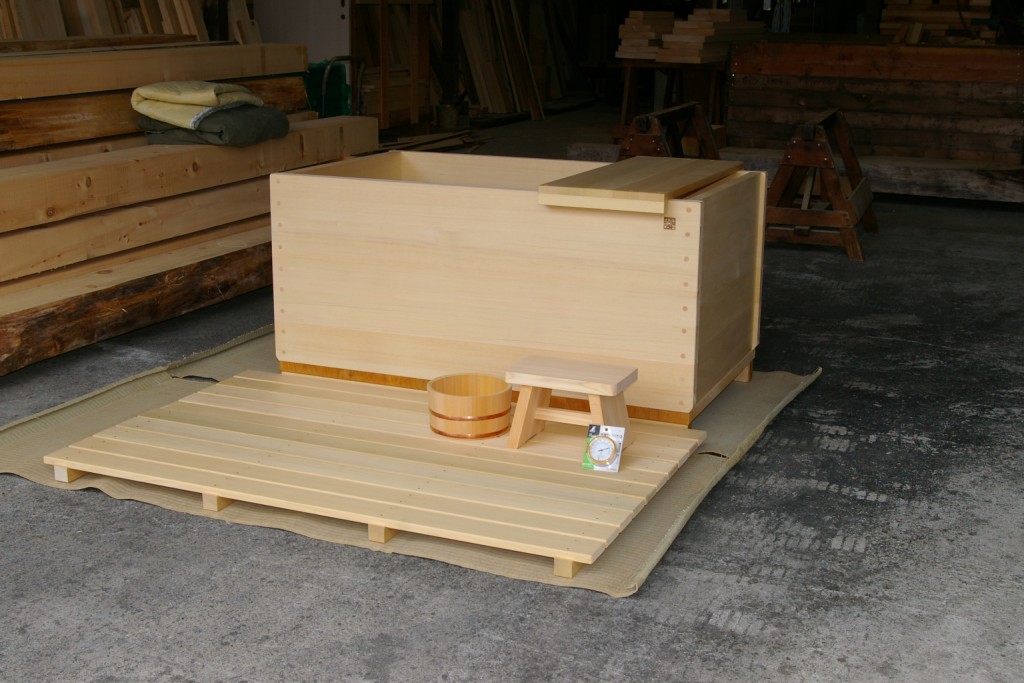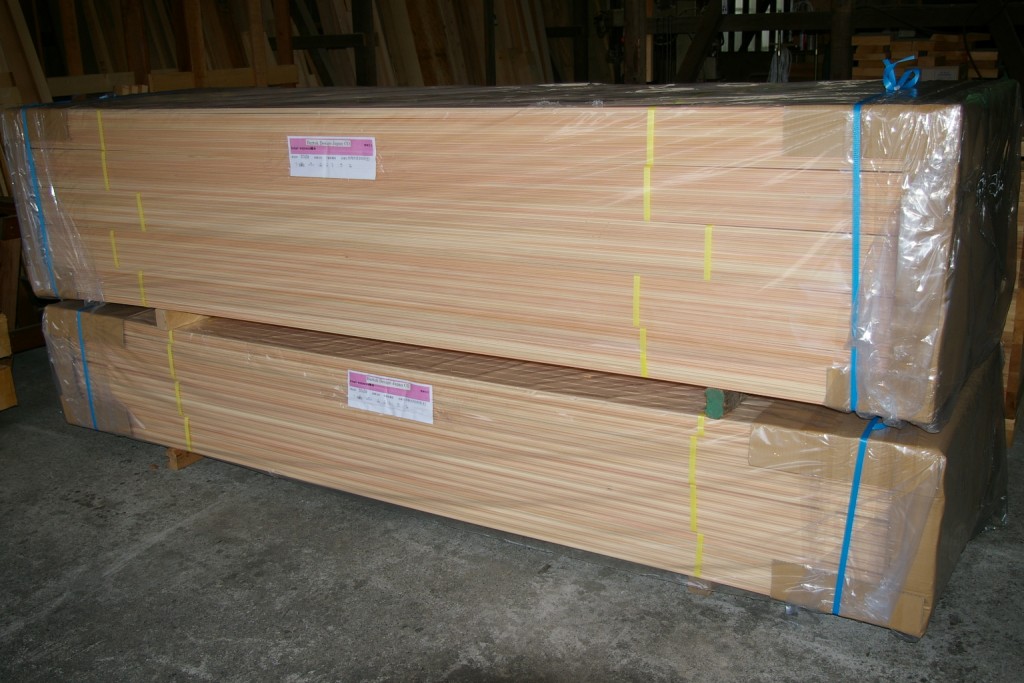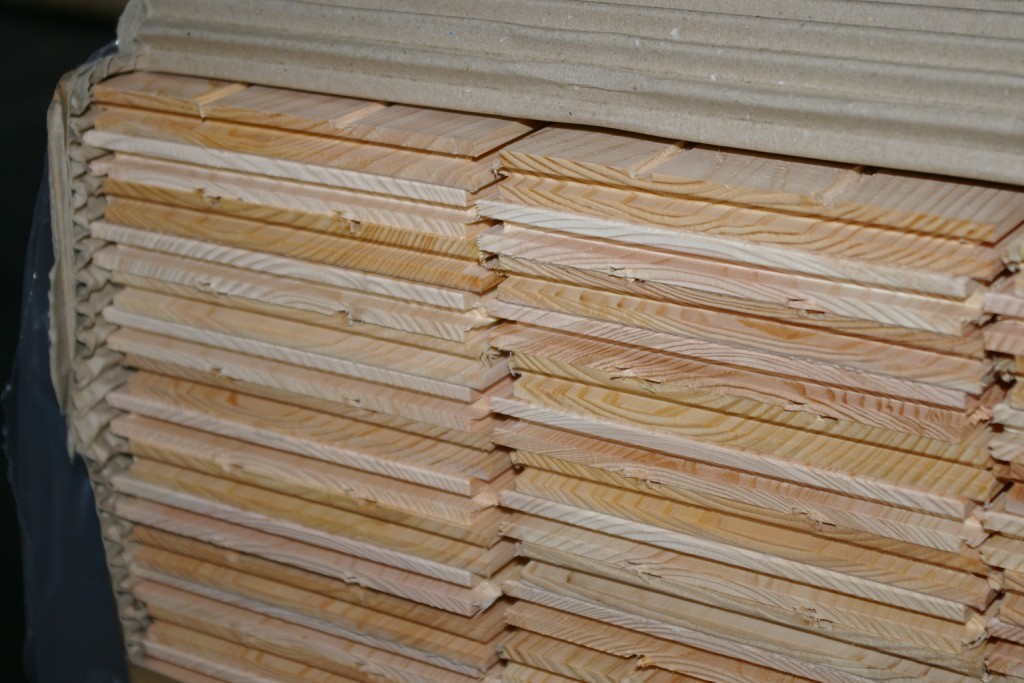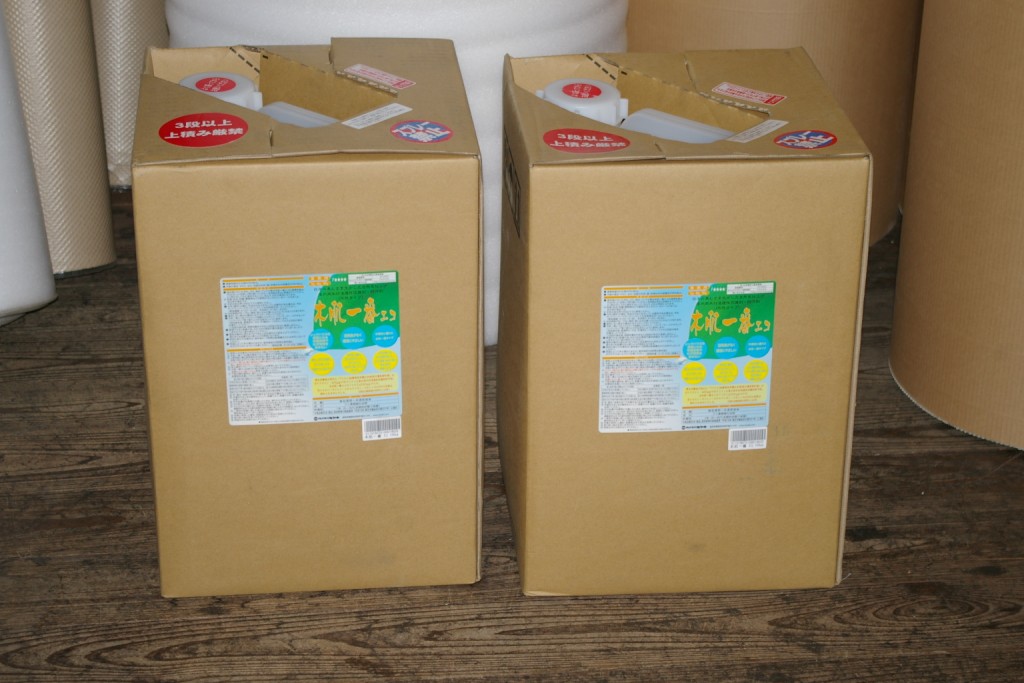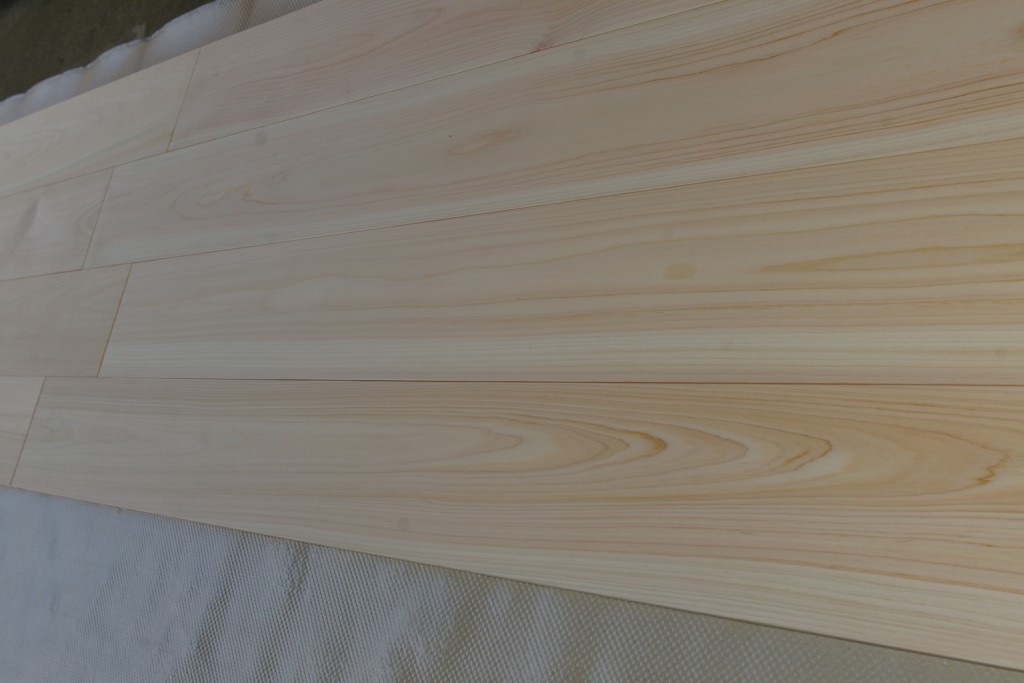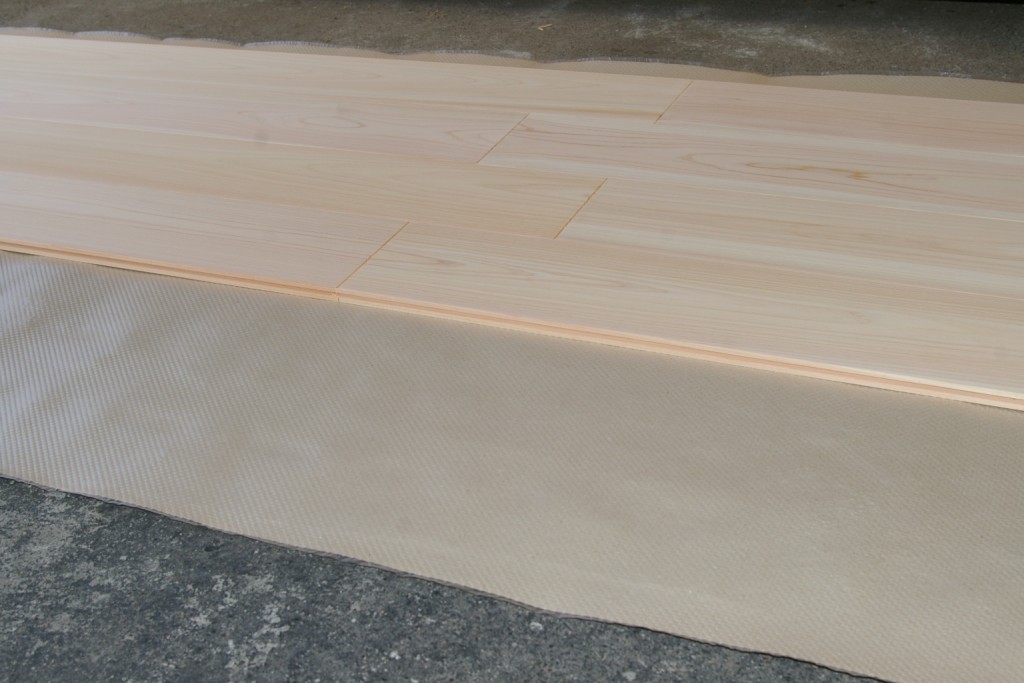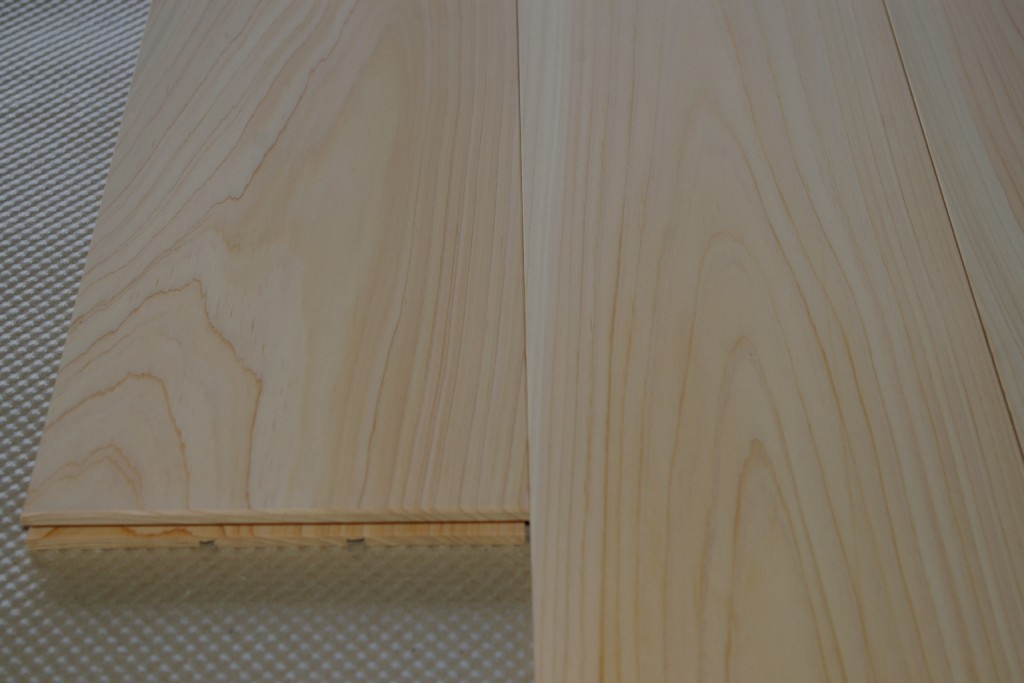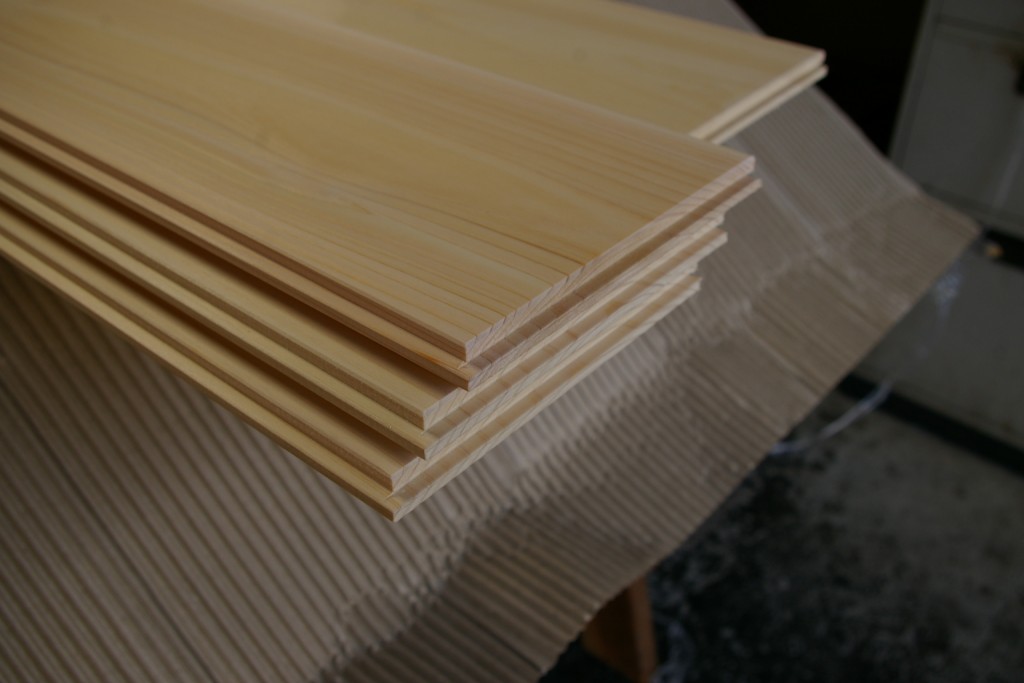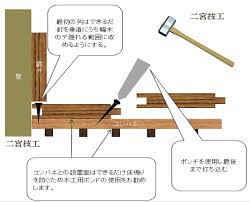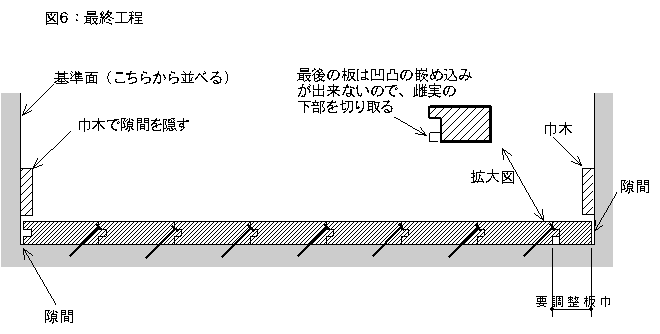“princely” ofuro for hong kong
A Japanese living in Hong Kong kindly coordinated on behalf of the owner the order or a large hinoki tub for a residence.
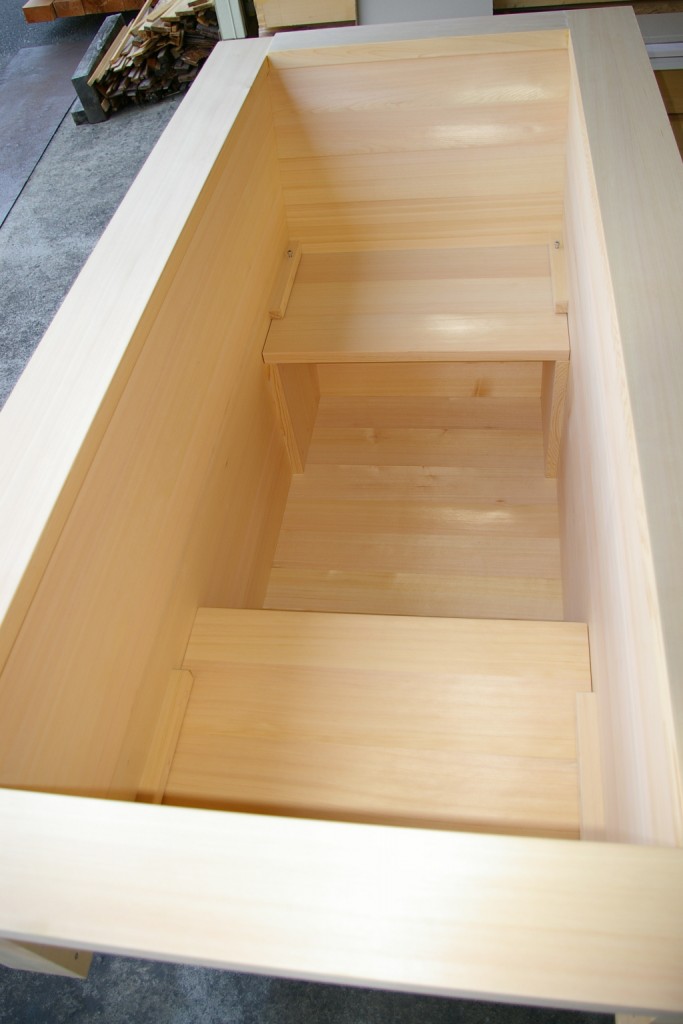
The installation will be in a ledge so the also supplied the external panels to be mounted on site.
Yoshiyaki is now holding the front panel to show how to position it. I am skipping the photos of the other sides…
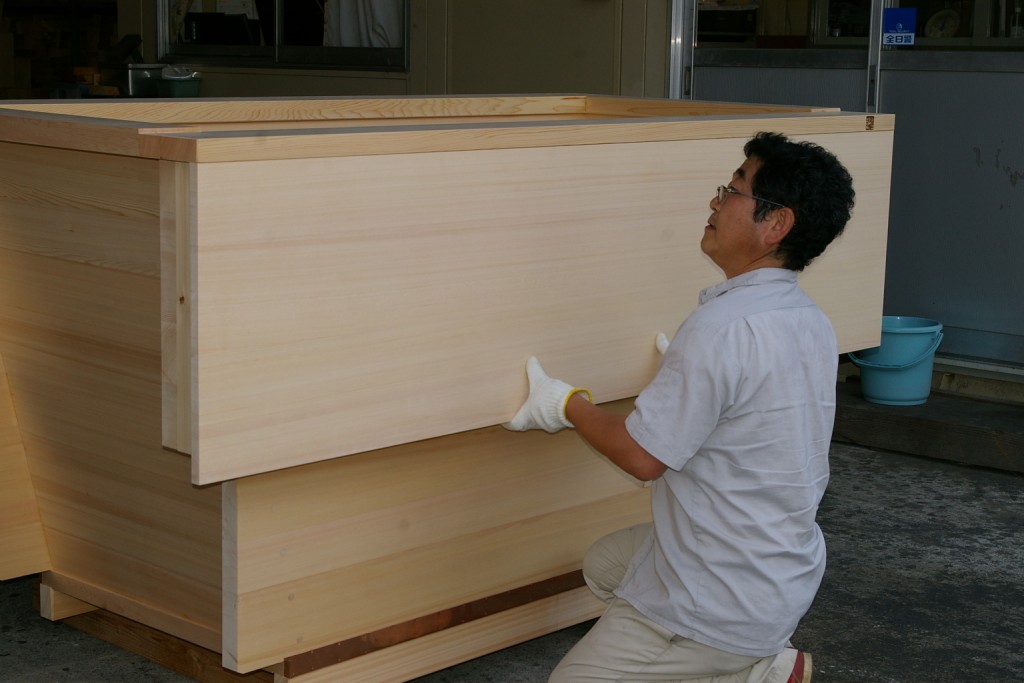
Here are the pictures of how it looks before inatallation, with a double shell construction,
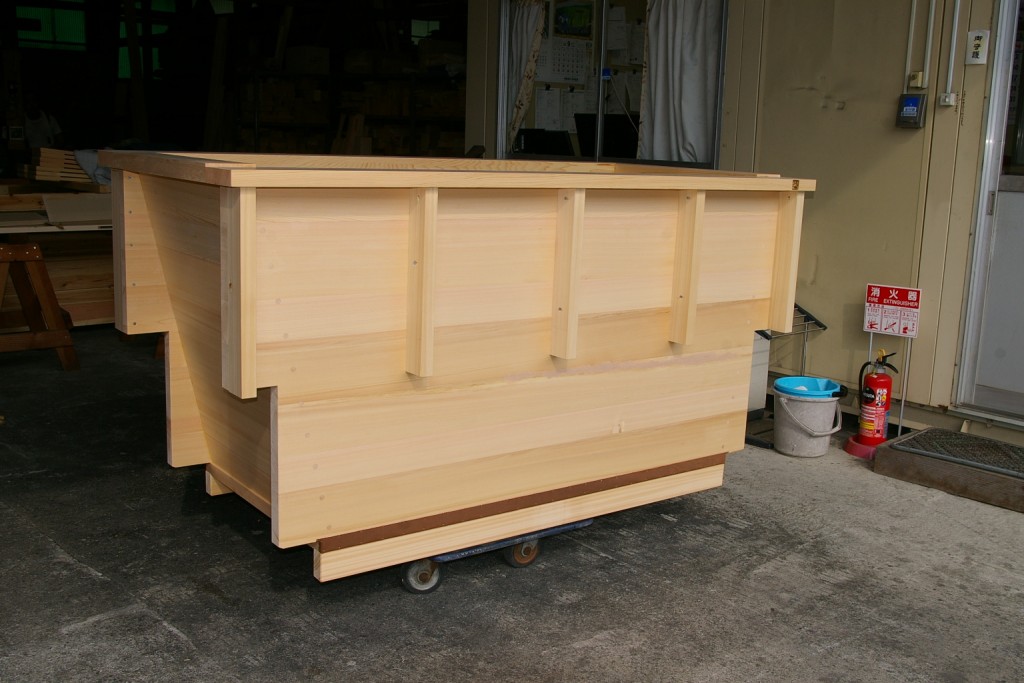
the other side will be recessed in a tiled ledge.
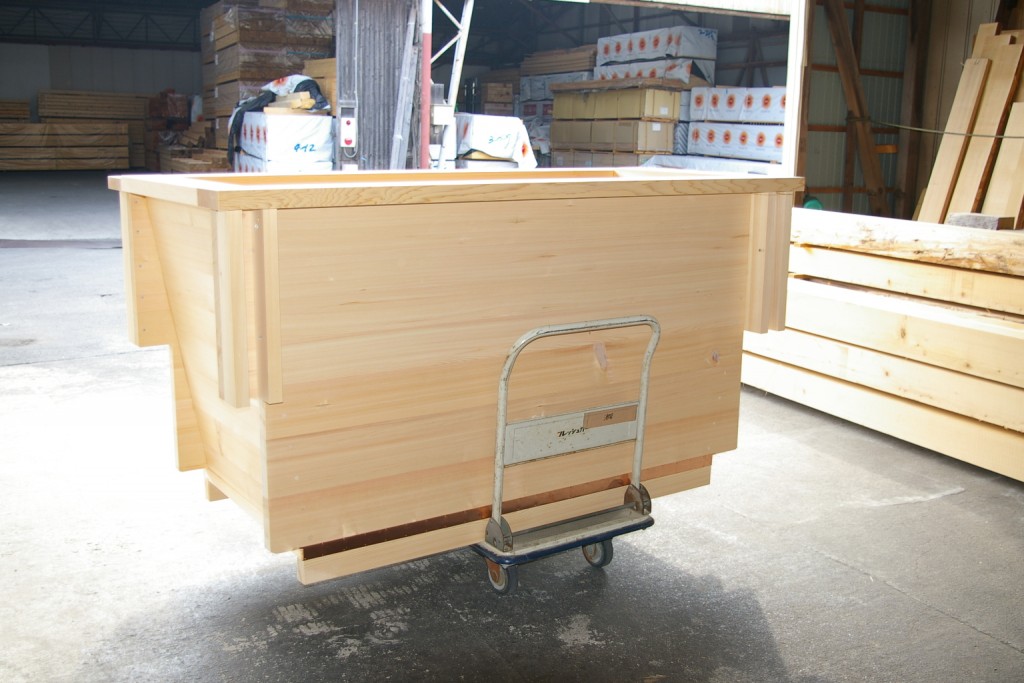
since the tub top frame is recessed on one side to direct the overflow in this direction, we added a base on one side to the cover planks.

Finally, here are the specs:
Material: Hinoki wood AB grade tub
Size: L2000mm x W1000 x H1050mm (ext. dim.) 930mm(depth)
Details: wooden dowel, copper under apron, iron brand at front top-right over flow top cut,
Options: Apron boards panels (supplied separately)
1) Short side: 960 x 508 x 25t
2) foront side: 2000 x 508 x 20t
3) back side: 150 x 508 x 20t
Hinoki wood a removable internal seat W400mm
Accessories:
Hinoki wood traditional cover 1020*x200x21 (10pcs)
Hinoki wood traditional stool (300x180x200H):
Sawara wood ladle with handle (180D 290H)
Sawara wood large bucket(230D 120H)
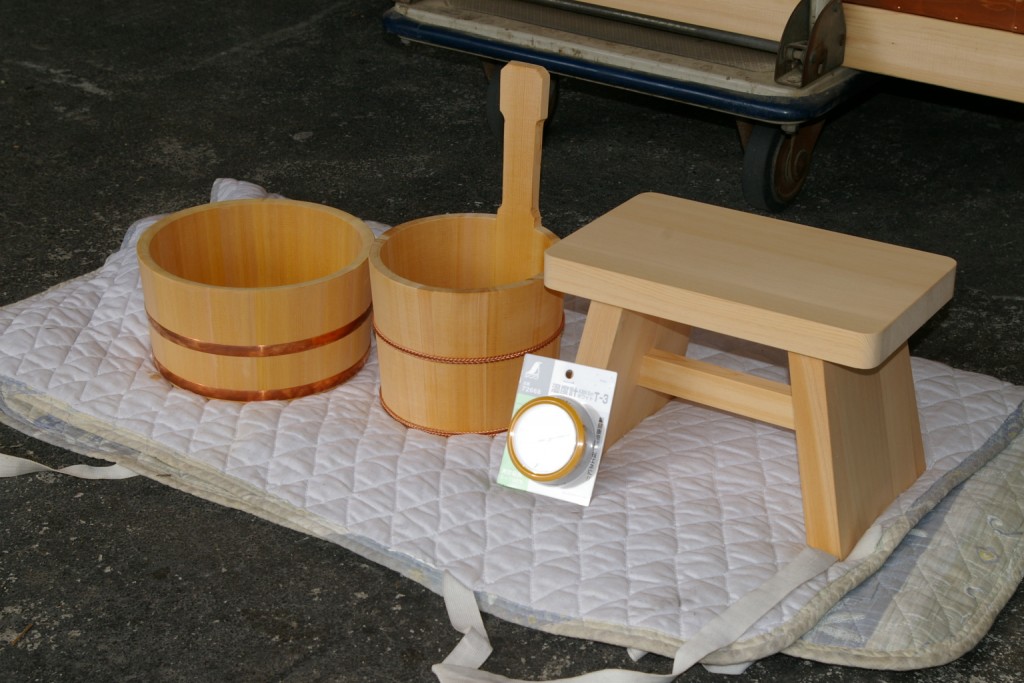
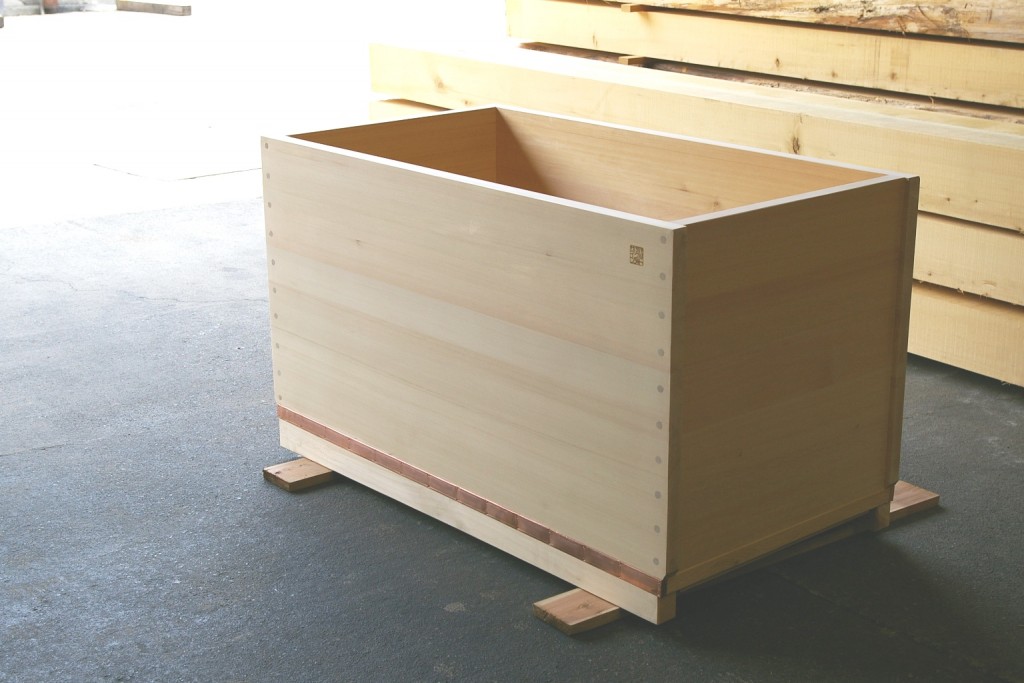
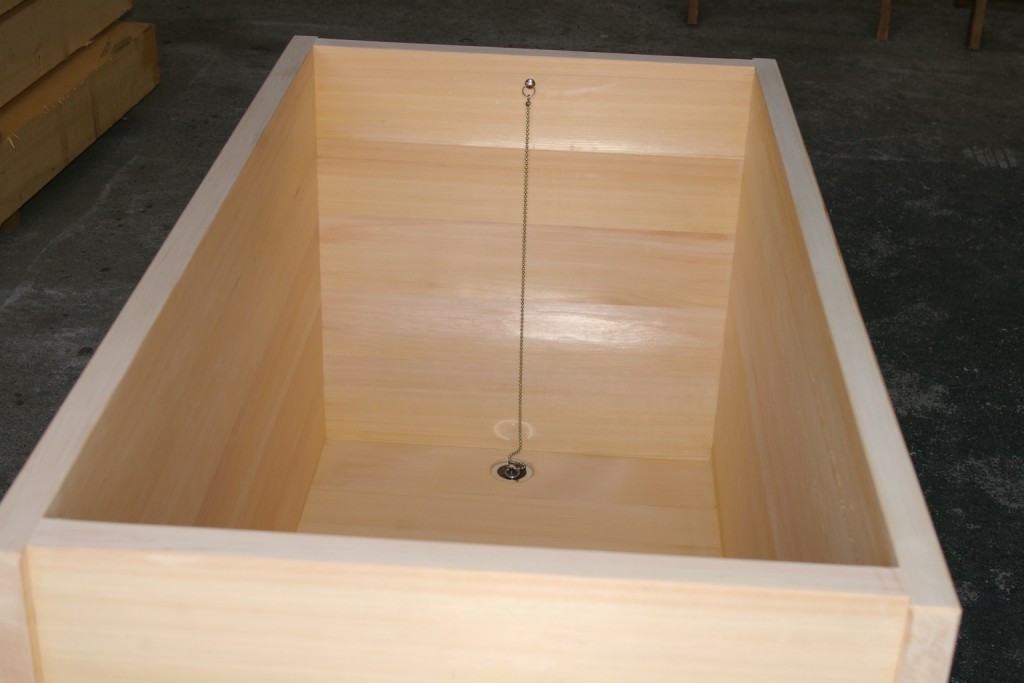
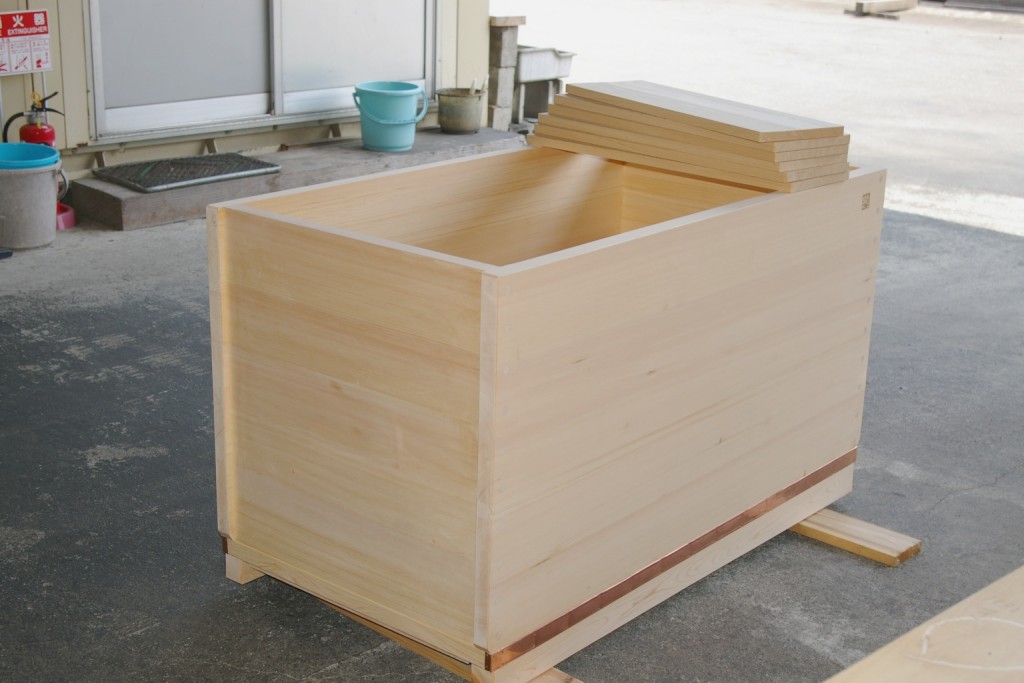
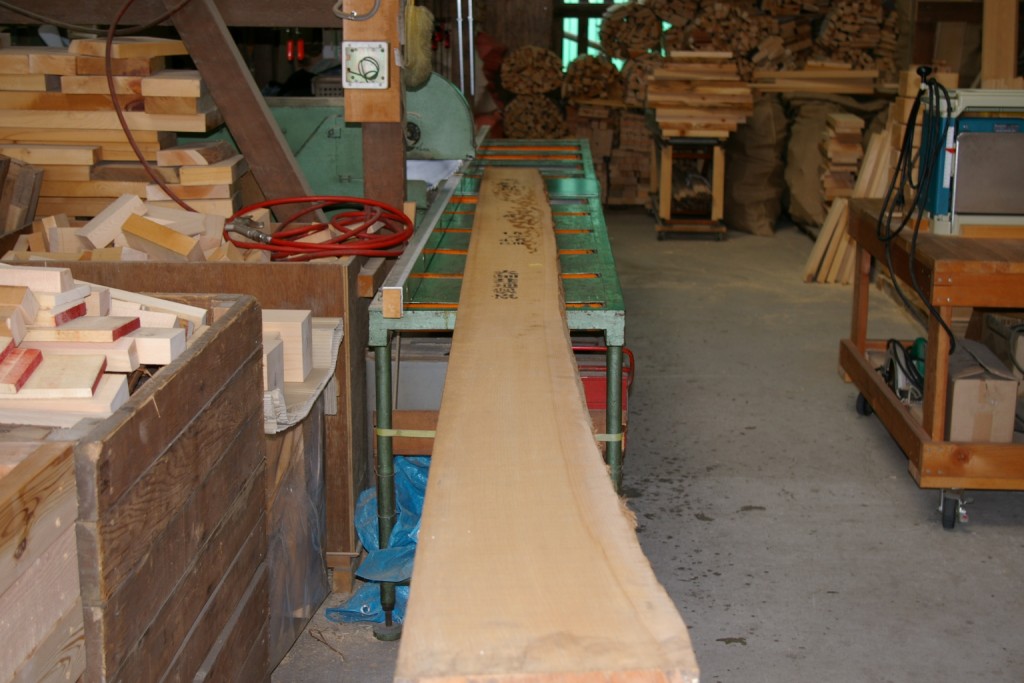 Today we prepared the lumber for another tub going to South Africa.
Today we prepared the lumber for another tub going to South Africa.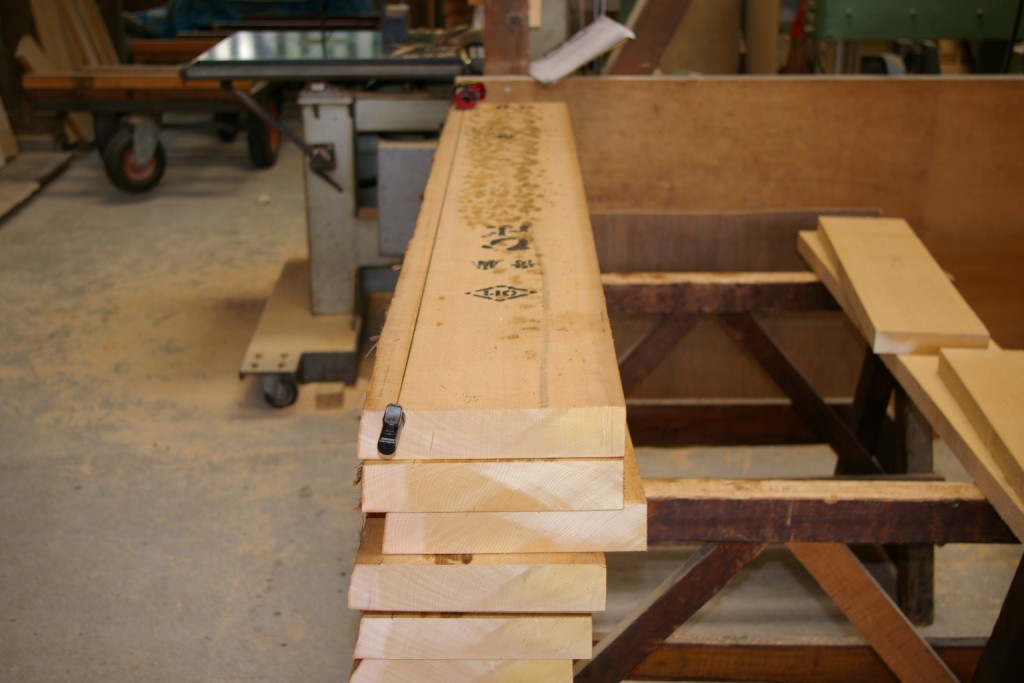 You can see some stains. This is not water but natural oil contained in the wood. This is the source of the aroma!
You can see some stains. This is not water but natural oil contained in the wood. This is the source of the aroma!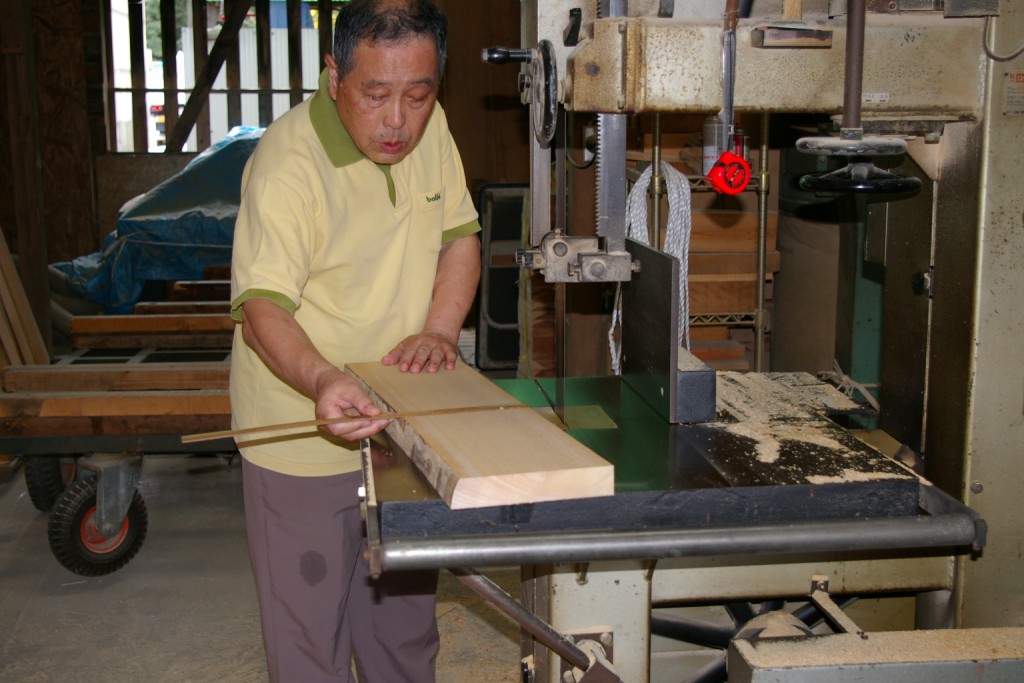 You can see the lumber is quarter sawn (parallel wood grain lines) and Mr. Ikeda is optimizing the cuts to mach as much as possible the bent line of the trunk
You can see the lumber is quarter sawn (parallel wood grain lines) and Mr. Ikeda is optimizing the cuts to mach as much as possible the bent line of the trunk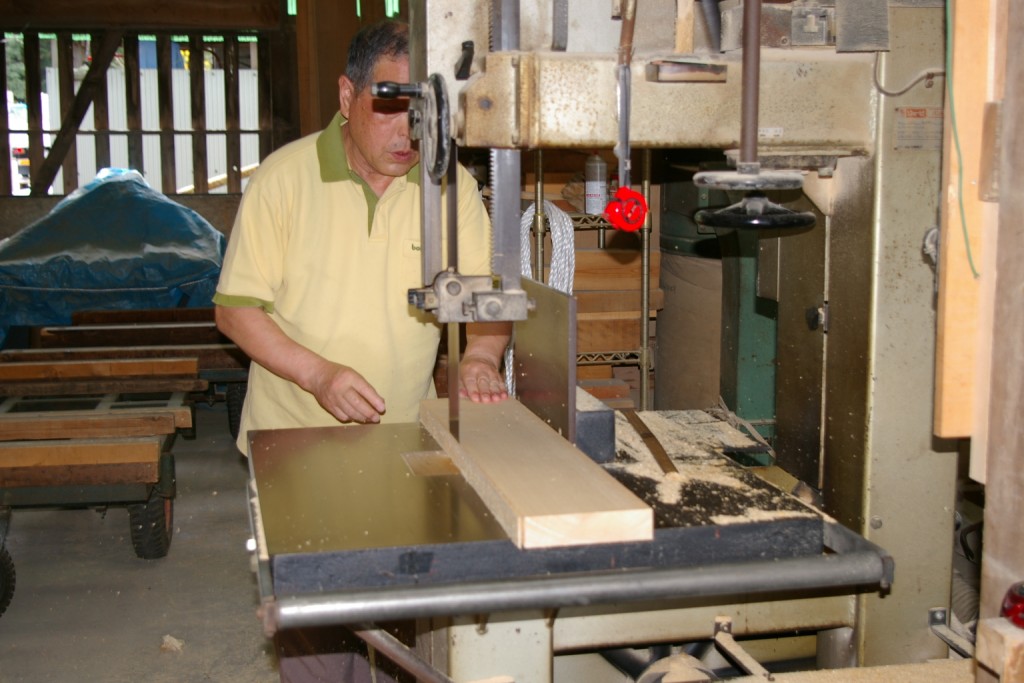 the sapwood area close to the bark is reduced as much as possible.
the sapwood area close to the bark is reduced as much as possible.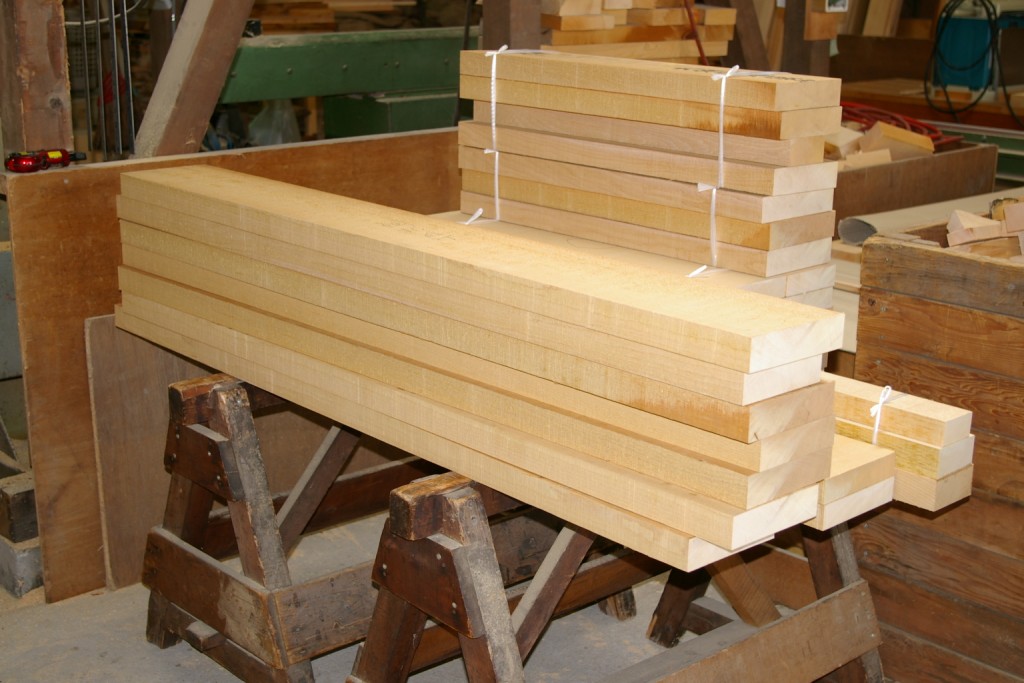 finally, this is material to build one ofuro 1500x750mm.
finally, this is material to build one ofuro 1500x750mm.